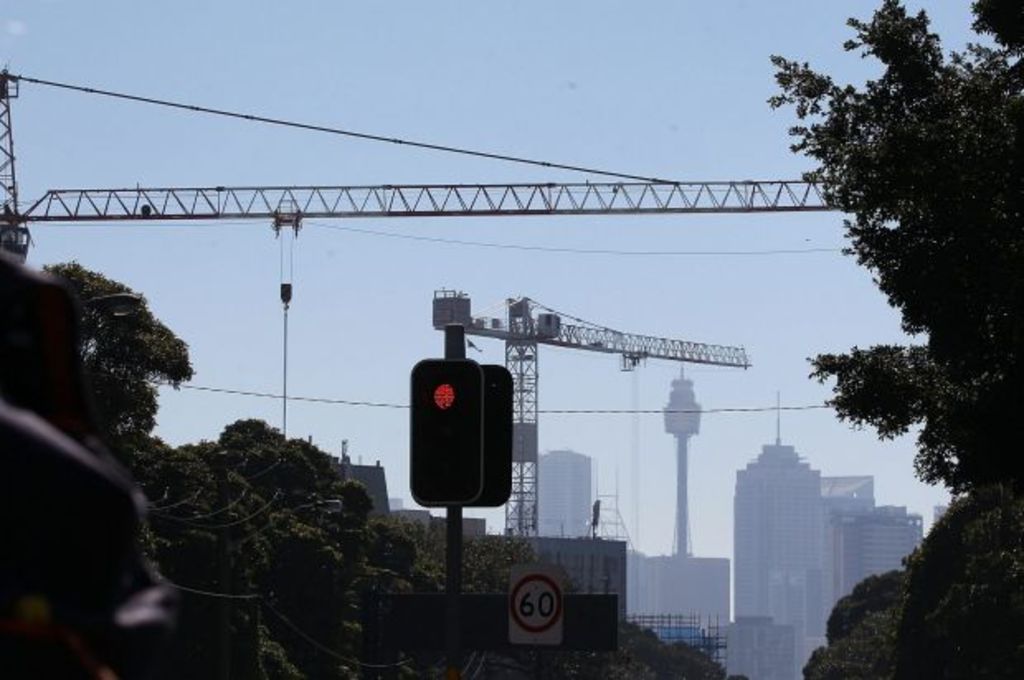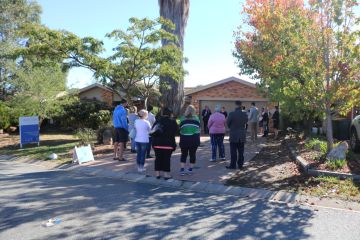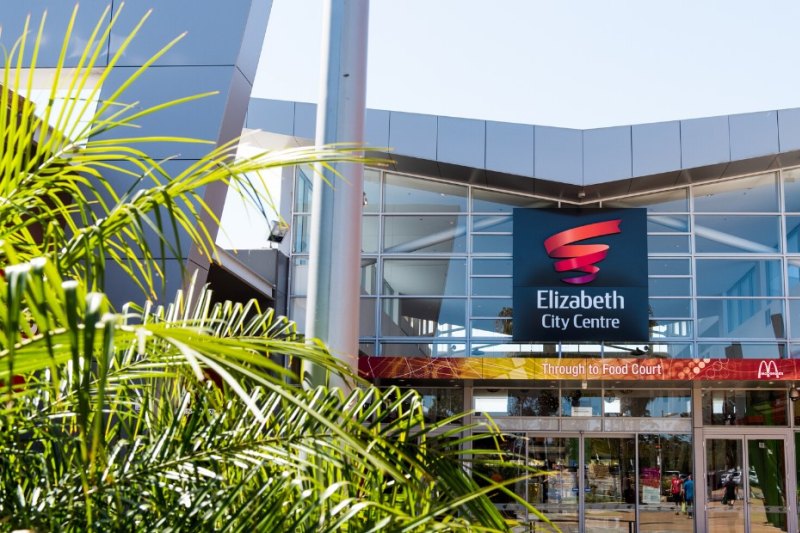Are you thinking of escaping Sydney? This is where to move to

Sick of Sydney? Aren’t we all. Nosebleed-inducing house prices, sky-high rents, terrible traffic and the looming summer – humidity, cockroaches, baking hot concrete.
Faced with paying $500 per week for a poky, ventilation-free studio apartment ages away from those beaches that are meant to make it bearable, it’s not surprising that youngsters are looking further afield.
But assuming you don’t want to go too far, where should you move to? Which of NSW’s nearby regional areas is most likely to float your affordability boat? Let’s take a look.
The Blue Mountains

Autumn colour at Mt Wilson in the Blue Mountains. Photo: Wolter Peeters
Arty, quiet and full of cute cottages, the Blue Mountains offers an almost-doable commute to Sydney and the opportunity to live surrounded by nature.
Prices have already risen thanks to Sydney buyers priced out of the western suburbs, and it would be remiss to avoid mentioning the bushfire risk in the area.
But the Blue Mountains still wins on affordability and atmosphere, as well as actual, world-famous landmarks to show your visiting friends.
Famous for: Wildlife, bushwalking, artiness, overcrowded trains on the weekend due to tourists.
What it’s got: The Winter Magic Festival, various famous natural landmarks. Springwood and Katoomba are the two major centres at either end, although if you’re in the lower mountains you might find yourself popping down to Penrith to do the shopping.
Distance to Sydney: It ranges from 75 kilometres from Springwood to the CBD, to around 120km from Mount Victoria. Commuting to Sydney can be a real strain anywhere past Lawson.
Why you should move there: You like peace and quiet, a backyard and antique shopping every day.
Wollongong

City beach in Wollongong. Photo: Adam McLean AMZ
Look, realistically, if you can’t afford western Sydney you may well be priced out of Wollongong too. The median house price is $760,000, making it the third most expensive city in Australia.
If you’re hoping to keep working in Sydney, as many do, you’re better off staying near an express station – Wollongong itself, or Thirroul. Woonona, Bulli and Thirroul are all considered a bit fancier, and Dapto and Unanderra a little less so.
Traditionally working-class, Wollongong is often compared to Newcastle, just don’t suggest that to residents of either or you may get your head bitten off. Much like its northern twin, the city is trying to ditch its industrial past and reinvent itself.
Hemmed in by the water and the escarpment, it’s got a tight-knit, friendly community and is popular with young families. In some respects it feels like an extension of “The Shire”, Sydney’s southern suburbs, in the same way that the Central Coast can feel like an extension of the northern beaches. There’s considerably less traffic, and there are a few cool small bars and restaurants popping up in the centre of town.
Nearby Shellharbour was once considered “Campbelltown by the Sea”, but that may no longer be considered an insult, considering Campbelltown’s median house price.
Famous for: Steel, beaches.
What it’s got: A train line, a university, and the biggest Buddhist temple in the southern hemisphere.
Distance to Sydney: Around 100km – around 90 minutes, either by car or train.
Why you should move there: If you like the beach but can’t afford Bondi; you like heading to the pub in thongs.
The Central Coast

Patonga Beach and ferry wharf.
The Central Coast is attracting a lot of young professionals who are priced out of the Sydney basin, want both a backyard and beach access and want to feel like they are on a permanent holiday/in the midst of retirement.
The area around Woy Woy is still relatively close to Sydney with a summer holiday vibe; Avoca and its surrounds are considered more prestigious, and Daleys Point and Pearl Beach a touch elite. Terrigal has regular weekend markets, with cafes and hipster-style second-hand shops nearby.
But it’s not all beach umbrellas and daiquiris. Some pockets of the Central Coast have a reputation of high unemployment – although it’s not always reflected in the house prices.
It can feel just like living in the country, complete with the shops having country opening hours but again much better transport links. Still, driving down to Sydney in peak hour can be a nightmare as the M1 can struggle to deal with the traffic.
Famous for: Beautiful beaches, laidback attitudes and walking barefoot around town.
What it’s got: Ocean views and water sports, with some nice boating on the Hawkesbury. There are some pretty big shopping centres and Tuggerah and Erina, too.
Distance to Sydney: Ranges from Woy Woy at 82km, to Budgewoi at 112km.
Why you should move there: You like a family-friendly, affordable area near the water that still allows a commute to Sydney.
Bathurst

Spectators camping to watch the Bathurst 12 Hour Race at Mount Panorama.
With a median house price of $417,000, it’s easy to see why mortgage-stressed Sydneysiders might be tempted to cross the Great Diving Range.
Aside from the cute, older-style traditional homes scattered about, there are also new housing estates and associated amenities going in around the Kelso area.
And there are seasons – real seasons – with hot summers and cold winters, so if you’re looking for a legitimate reason to wear Ugg boots, this could be your town.
Famous for: There’s this car race, for starters.
What it’s got: A racetrack, Charles Sturt University, a hospital, and a lot of pubs.
Distance to Sydney: Just over 200km, so you’re looking at around a three-hour drive.
Why you should move there: It’s just on the other side of the Blue Mountains – so the big smoke is still accessible – and you can get there on public transport. (Also, you like car racing. Do you like car racing? It’s perfect.)
Orange

Orange, NSW. Photo: Dominic Lorrimer
With a median house price of $370,000, Orange offers affordability, a veritable cornucopia of dinner and drinks options and a family-friendly vibe.
At times the area has struggled economically – it was hit by the closure of the last refrigerator factory in Australia – but it’s now experiencing somewhat of a revival in terms of population and opportunity.
It’s worth moving here for the autumn colours alone and for the fresh country air. Throw in a 10-minute commute, and a library, museum, art gallery, university campus and slew of tasty breakfast options – what it might lack it nightlife, it makes up for in daytime activities.
Famous for: What you might not know about Orange is that it’s actually famous for apples.
What it’s got: The Department of Primary Industry, food, wine, pubs, parks and gardens. And sometimes it snows, which, frankly, sounds magical.
Distance to Sydney: Just over 250km, or around a 3½ to four-hour drive.
Why you should move there: You like snow, wearing proper winter coats, amateur sommeliering and working for the public service.
Newcastle

Darby Street in Cooks Hill, Newcastle. Photo: Max Mason-Hubers
Luring Sydneysiders north in droves, “Newie” is a city with beaches, a university, cafes, pub and bands that tour (and evidently bar fights, with the dubious honour of having beaten Sydney to instituting lockout laws.)
There’s been a push to revitalise the city centre with some major redevelopment underway – Newcastle is now courting “Smart City” status – and the train line between Hamilton and Newcastle has been removed to free up space.
Perfect for tradies who surf, it offers a lot of the advantages of city living combined with a slightly quieter, less crowded, “everyone knows everyone” country vibe. Charlestown and Kotara play host to the main shopping areas, Darby St has the cafes and restaurants, and Merewether the more exclusive beachside enclave (with the corresponding price tag).
Famous for: Silverchair, Jennifer Hawkins, steel, beaches, an earthquake, and a lightrail network that’s under construction.
What it’s got: A university, an airport and a football team, extensive beaches, and festivals such as the Writers Festival and This is Not Art.
Distance to Sydney: 160km or so, with trains and planes an option. It’s about three hours on the train and 2½ to drive, so while it’s possibly to get to Sydney and back in a day, it’d be a slog as a weekly commute.
Why you should move there: You want a cheaper house, but access to the beach and all kinds of amenities – you know, like a city. A smaller city.
Maitland/The Hunter Valley

The Groovin the Moo festival at Maitland Showground, Maitland. Photo: Jonathan Carroll
The Hunter Valley region extends out from Newcastle up to Cessnock, Maitland, Raymond Terrace and Port Macquarie, a popular retirement destination.
If you’re able to score a job in Newcastle, too, the commute from Maitland will seem like a breeze compared to trying to get across a similar distance in Sydney in peak hour, although you’d still need to allow around 45 minutes.
It’s largely visited for its extensive wine region but there are also other opportunities in tourism – although generally speaking jobs might be thin on the ground.
Famous for: Wine, coal and racehorses.
What it’s got: Wineries, a hospital, a TAFE, day spas, golfing and hot-air-ballooning.
Distance to Sydney: It’s a 165km drive from Maitland to Sydney and while there’s not a direct train, you can head into Newcastle and then change to go south from there.
Why you should move there: You want cellar doors and markets galore, while still being close to a major urban centre.
Nowra/Shoalhaven

Collingwood Beach in Vincentia, Jervis Bay. Photo: Domino Postiglione
If you stay on the train from Sydney to Wollongong and keep going past it, you’ll get to the Shoalhaven. Just on the other side of Kiama, it’s a bit too far to commute.
Comprising of Nowra, Ulladulla, Huskisson and the Kangaroo Valley, again it’s the beach access and nature that proves a major drawcard. Shopping and nightlife options might be limited, but if you’re more likely to be entertained outdoors, you’ll love it.
Overall the area has seen big price gains, according to the latest Domain House Price Report, with 17.8 per cent growth in a year to a $537,000 median in the June 2017 quarter.
Famous for: Australia’s whitest sand, Jervis Bay being governed by the laws of the ACT.
What it’s got: Beaches galore, a hospital and a Navy base.
Distance to Sydney: Nowra – well, Bomaderry – is at the end of the train line and is about 170km from Sydney. Ulladulla is about a three-hour drive.
Why you should move there: You’ve already tested out Wollongong and you’re really ready for life in the slow lane.
The Southern Highlands

Bong Bong Street, Bowral, which features the iconic Grand Arcade.
Ranging from the very well-heeled Bowral to quieter country towns like Marulan and Gunning, the Southern Highlands has an English-village vibe, helped along by the chillier weather.
Green and garden-heavy, it has a Tulip season and this year celebrated it’s inaugural Pie Time event – a chance to “celebrate all things Pies”.
Famous for: Tudor-style houses, being a bit colder, antiques, Don Bradman, Fitzroy Falls, and The Big Potato (what, you haven’t heard of it?)
What it’s got: A lot of retirement villages and is popular with the older crowd; a pony club type vibe; a maximum security prison.
Distance to Sydney: Bowral is 121km, Goulburn is around 200km. It’s connected to Sydney via a train line, but commuting daily from the area would be a stretch.
Why you should move there: You like pie-themed events, Bronte sisters cosplay opportunities, and golf.
Canberra

Canberra – not just roundabouts. Photo: Elesa Kurtz
So it’s not technically the country – or even a regional area. It’s a lot greener and quieter than Sydney.
The nation’s capital has a reputation for being boring and soulless, but a lot of the locals would disagree. It’s easy to get in and out of, a couple of hours to the beach and the snow, and the city has museums and galleries galore.
Famous for: Being a containment vessel for the scourge of Australian society, politicians, roundabouts and a prime minister’s Lodge that not PM wants to live in.
What it’s got: An international airport, museums, a famous lake, not one but two Parliament Houses, Cockington Green and Questacon and lots of public service jobs.
Distance to Sydney: Just under 290km. It’s too far to commute – unless that much mooted high-speed train gets built – but there are rail, coach and perennially-expensive flights.
Why you should move there: You don’t care about dagginess but you do care about liveability. And you like cycling.
We recommend
States
Capital Cities
Capital Cities - Rentals
Popular Areas
Allhomes
More







